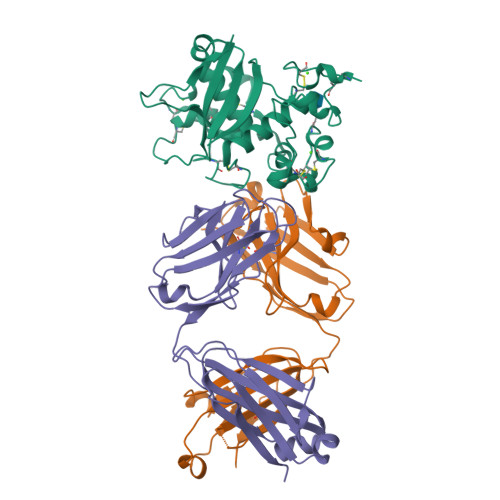Glow-based assay sheds light on disease-causing mutations
Not every item at a crime scene is the key to solving the crime, and not every mutation in a protein causes disease. Distinguishing between benign variability and pathogenic mutations in a disease-associated protein is challenging. One approach is to determine whether the mutation causes structural changes in the protein, as this may indicate a change in its function.
There are several methods to identify protein structure changes, each with its own strengths and limitations, including mass spectrometry, nuclear magnetic resonance, or NMR, and protein gels. While mass spectrometry and NMR can give very detailed molecular information, they are expensive and cumbersome. Protein gels are faster but provide less quantifiable results. A recent paper from Michael Wang’s lab at the University of Michigan, published in the Journal of Biological Chemistry, has added a new tool to the list that is quick and easy to perform and provides quantifiable results, suitable for high throughput screens when researchers just need to know if a protein structure is altered.

Wang and the first author, research specialist Naw May Pearl Cartee, demonstrated how their assay identifies structural changes by screening a range of mutations in the NOTCH3 protein. NOTCH3 is a membrane-bound receptor involved in maintaining smooth muscle, particularly in blood vessels. More than 200 NOTCH3 mutations have been associated with a rare genetic vascular disease, cerebral autosomal dominant arteriopathy with subcortical infarcts and leukoencephalopathy, or CADASIL, but only some of them are likely causal.
CADASIL causes frequent strokes, migraines, mood disorders and dementia. It is characterized by progressive accumulation of deposits of NOTCH3 in the walls of small arteries, though it is unclear whether the deposits themselves, the disruption of NOTCH3 signaling or a combination is what drives the disease.
To understand the effects of NOTCH3 mutations on protein structure and localization, Pearl redesigned a split-luciferase assay. The assay relies on a glowing luciferase molecule that has been split into two non-glowing parts. Cartee placed the luciferase pieces on opposite ends of NOTCH3, so the structure of the protein determines how close the luciferase pieces are, which in turn determines if they can glow. The amount of glow can be quantified as a readout for protein structure.
The assay, combined with straightforward follow-up experiments, can also quantify secretion of proteins, as mutations can also affect protein trafficking. Using this workflow, the team characterized more than a dozen NOTCH3 mutations.
Wang and Cartee’s work supported previous studies showing that mutations that change the number of cysteines from even to odd and alter disulfide bonds are the most disruptive to NOTCH3 structure. They also showed that adding mutations that bring the cysteine count back to an even number suppresses the detrimental effects, information which could lead to better diagnosis and treatments, especially if combined with more clinical data.
The assay has one very big benefit that may make it appealing to other researchers: “This is an easy assay,” Pearl said, “You just transfect and the next day you change the media and let it go for a few hours.” The quick protocol makes it good for screening a high number of mutations.
In addition, Wang explained that the assay is practical in two other ways: First, it isn’t binary, so it allows you to rank mutations by how damaging they are, rather than a yes or no.
Second, correctly folded NOTCH3 holds the luciferase halves together, allowing glowing, while unfolded reduces glowing. Wang explained that this is ideal for high-throughput drug screening, since you’d be looking for a restoration of signal in the presence of a therapeutic structure-restoring compound, which is much less likely to occur through nonspecific effects.
The assay works particularly well in proteins like NOTCH3, where cysteine mutations play a big role. “It would be ideal if everybody working on a cysteine-related disease could use the assay,” Wang said. I’m hoping people can apply it.”
Enjoy reading ASBMB Today?
Become a member to receive the print edition four times a year and the digital edition monthly.
Learn moreGet the latest from ASBMB Today
Enter your email address, and we’ll send you a weekly email with recent articles, interviews and more.
Latest in Science
Science highlights or most popular articles

Building the blueprint to block HIV
Wesley Sundquist will present his work on the HIV capsid and revolutionary drug, Lenacapavir, at the ASBMB Annual Meeting, March 7–10, in Maryland.

Gut microbes hijack cancer pathway in high-fat diets
Researchers at the Feinstein Institutes for Medical Research found that a high-fat diet increases ammonia-producing bacteria in the gut microbiome of mice, which in turn disrupts TGF-β signaling and promotes colorectal cancer.

Mapping fentanyl’s cellular footprint
Using a new imaging method, researchers at State University of New York at Buffalo traced fentanyl’s effects inside brain immune cells, revealing how the drug alters lipid droplets, pointing to new paths for addiction diagnostics.

Designing life’s building blocks with AI
Tanja Kortemme, a professor at the University of California, San Francisco, will discuss her research using computational biology to engineer proteins at the 2026 ASBMB Annual Meeting.

Cholesterol as a novel biomarker for Fragile X syndrome
Researchers in Quebec identified lower levels of a brain cholesterol metabolite, 24-hydroxycholesterol, in patients with fragile X syndrome, a finding that could provide a simple blood-based biomarker for understanding and managing the condition.

How lipid metabolism shapes sperm development
Researchers at Hokkaido University identify the enzyme behind a key lipid in sperm development. The findings reveal how seminolipids shape sperm formation and may inform future diagnostics and treatments for male infertility.

